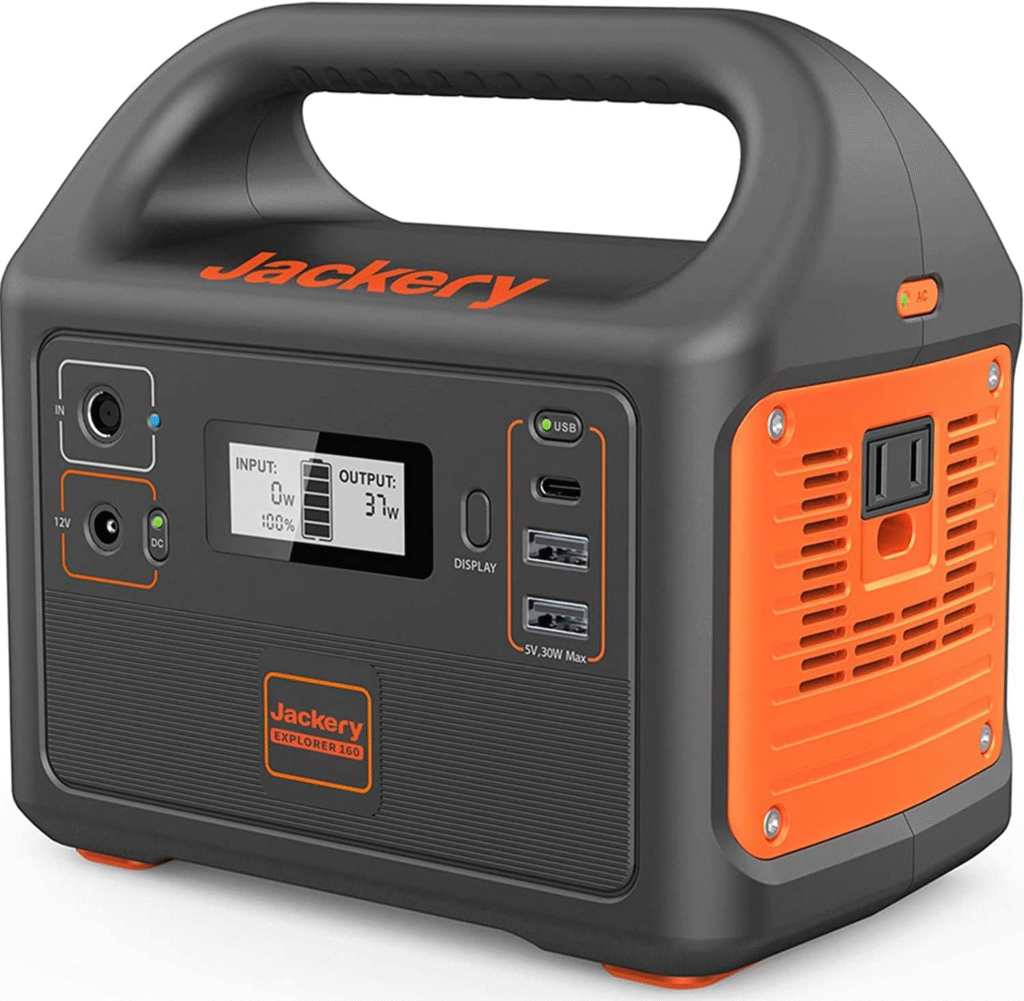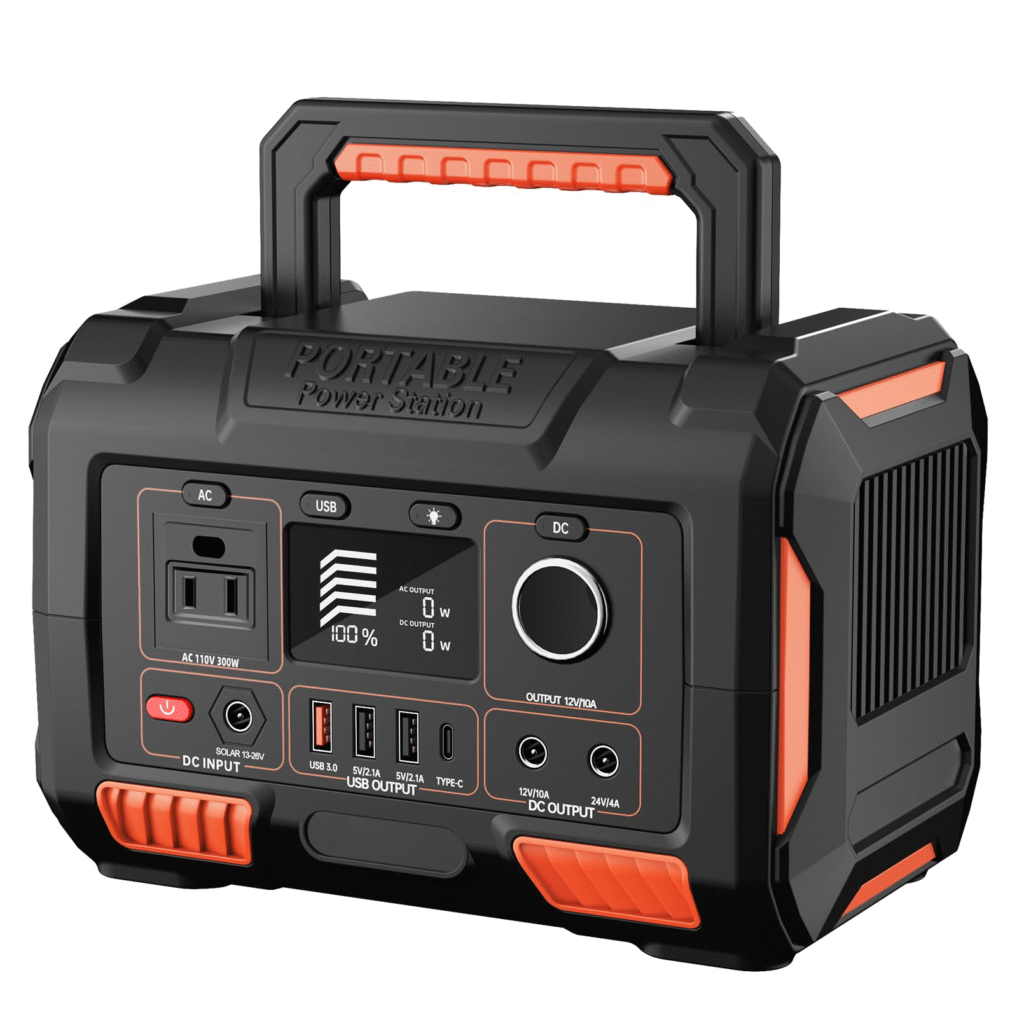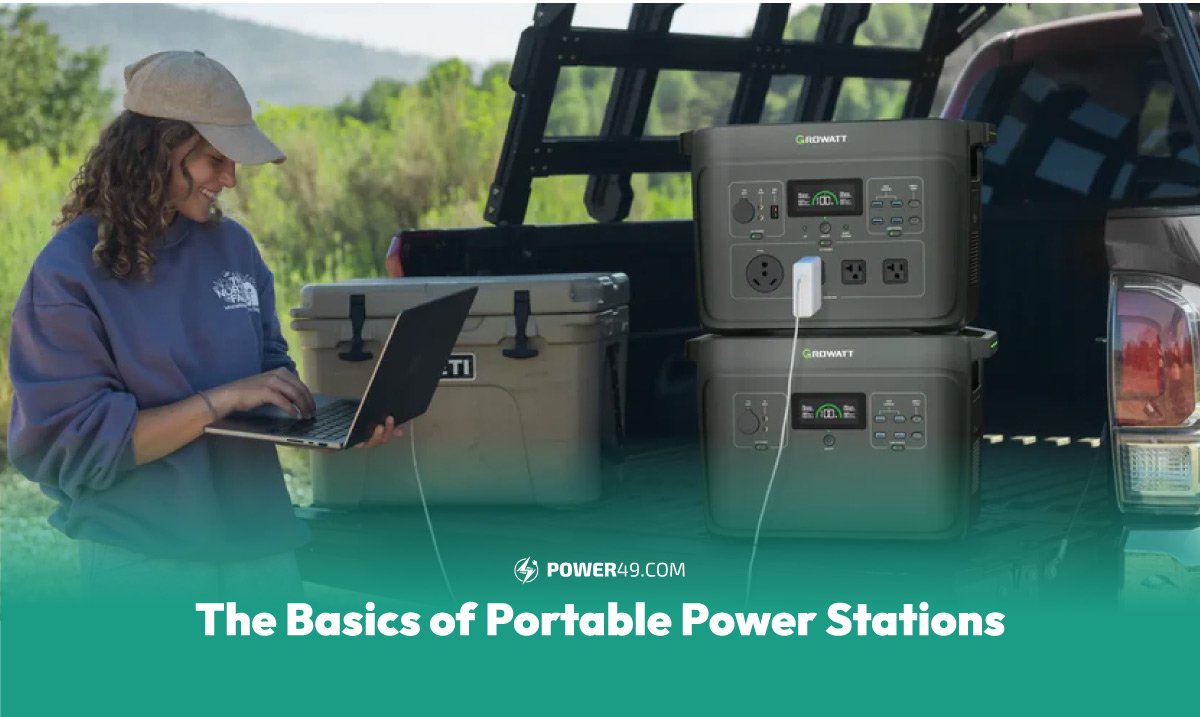Imagine you’re camping, and your phone has only 5% battery left. You plug it into a portable power station—bam! Your phone is ready to snap pics, send texts, or use GPS to find your way to the perfect spot. Imagine this scenario during a blackout or while you’re out of town—in an RV or mountain cabin, for example—and you get the idea. Portable power stations keep the lights on when traditional power isn’t available. Let’s get started with the basic of portable power stations.
Portable power stations are essentially portable backup power supplies for various scenarios. But understanding how they work, the types available, and how to pick the right one for your needs can be complicated. That’s what we’re here for!
We’ll dive into portable power stations and break them down in a way that makes sense for you—whether it’s charging your phone, running a fridge, or powering tools when you can’t plug into traditional power.
What is a Portable Power Station?
A portable power station is, at its core, a large rechargeable battery you can carry to power devices or appliances when you’re not near an outlet. It’s essentially a battery-powered “mobile generator.”

In simple terms, a portable power station absorbs electricity (from a wall socket, car, or solar panels), stores it in a battery, and then allows you to pull electricity from multiple output ports (USB ports, AC outlets, etc.) to power devices (laptops, smartphones, small appliances, even power tools). They’re commonly used when camping, during power outages, or when living off the grid.
Why Should You Care?
You might not realize how useful a portable power station is until you actually need one. Picture yourself on a long hike, unable to charge your phone, and no outlet in sight. Or maybe you’re in an area prone to blackouts and need power for lights, a fridge, or medical equipment.
A portable power station is a lifesaver in such situations. It provides power when you’re away from the grid and have no other options.
Key Benefits of Portable Power Stations
- No Noise: Unlike gas generators, portable power stations make no sound.
- No Gas: They run on electricity, so no gas is required—just good old-fashioned power.
- Multi-functional: With various types of outlets (AC, DC, USB), you can power different devices.
- Green: They’re environmentally friendly, emitting no pollutants unlike gas generators.
What Type of Portable Power Station is Right for You?
You might be wondering, “How hard could it be to choose one?” The right portable power station for you depends on battery size, power requirements, and other factors.
Here are the main types of power stations to consider:
Modern Standard — Lithium-Ion Power Stations
Why They’re Popular:
- Efficiency: Li-ion batteries store more energy than lead-acid batteries.
- Longer Lifespan: They last 500 to 1,000 charge cycles (3-5 years, depending on use).
- Lightweight: Li-ion batteries are easier to carry, perfect for camping or road trips.
Disadvantages:
Li-ion power stations are more expensive than lead-acid ones, but the longer lifespan and faster charging are worth the price.
Example: Jackery Explorer 1000 — Great for charging phones 100 times or keeping a small fridge running for hours. It’s ideal for camping or short-term emergency use.

Battery Power Stations — Lead-Acid (Old School)
For years, lead-acid batteries were the go-to for portable power stations. They’re reliable but heavy.
Why Choose Lead-Acid:
- Affordable: They’re more economical than Li-ion alternatives, which is great if you only need a simple power source.
- Durable: They perform better in extreme temperature conditions.
Disadvantages:
- Weight: Lead-acid batteries are much heavier than Li-ion, making them harder to transport.
- Shorter Lifespan: They last only about 300 to 500 charge cycles.
- Longer Charging Time: Lead-acid batteries take longer to recharge.
Example: Goal Zero Yeti 400 — A bit bulky but perfect for running small appliances or lights during a power outage.
Emerging Technologies — LiFePO₄ & Solid-State Batteries
With evolving technology, new battery types are emerging.
- Lithium Iron Phosphate (LiFePO₄): These are safer, more stable, and last longer (up to 3,000 charge cycles). The trade-off is they’re a little heavier than Li-ion batteries.
- Solid-State Batteries: Still under development, these batteries offer higher energy density, quicker charging, and safer operation than traditional batteries.
Essential Elements to Understand: What is a Power Station Made Of?
When selecting a portable power station, consider the following elements:
1. Power Output and Battery Capacity
You’ll see numbers like 500Wh, 1000Wh, or 3000Wh. These represent the battery capacity.
- Watt-Hours (Wh): A higher Wh means more energy storage and longer runtimes.
For example, a 1000Wh station will output 100 watts for 10 hours. If you need to power a laptop (around 50W) for 6 hours, a 500Wh station will suffice.
2. Inverter
Portable power stations convert DC (Direct Current) to AC (Alternating Current) so you can plug in everyday devices like laptops and TVs.
- Pure Sine Wave: Ideal for sensitive electronics, providing stable and clean power.
- Modified Sine Wave: Cheaper inverters that may work for lights and fans but could damage sensitive equipment.
3. Ports and Charging Options
- AC Outlets: For regular devices (like home outlets).
- USB Ports: For small electronics (phones, tablets, cameras).
- DC Outlets: For car chargers or 12V appliances (e.g., coolers).
- Solar Panel Input: Allows recharging with solar power for off-grid living.
4. Additional Features
- Surge Protection: Essential to prevent damage from power surges.
- App Integration: Some models offer apps to monitor battery levels and usage.
- LCD Screen: Shows real-time battery information, so you know how much power you have left.
What Power Station Should I Get?
To determine the right portable power station for you, consider:
- Size: How many devices need charging, and for how long? Add up the wattage to estimate your capacity requirements.
- Portability: If you travel frequently or hike, a lighter, more compact model may be best.
- Power Requirements: For heavy devices like fridges or power tools, choose a model with higher output and a pure sine wave inverter.
- Cost: Extra features (solar charging, app control) increase the price but offer greater flexibility and longevity.

Conclusion: Portable Power at Any Time, Anywhere
Portable power stations are essential for various situations—whether camping, preparing for a storm, or simply during a power outage. By understanding your capacity needs, portability, and features, you can choose the perfect model for your situation.
If you travel frequently, spend time outdoors, or want to be prepared for emergencies, a portable power station is a solid investment. Charge up whenever, wherever you need!




